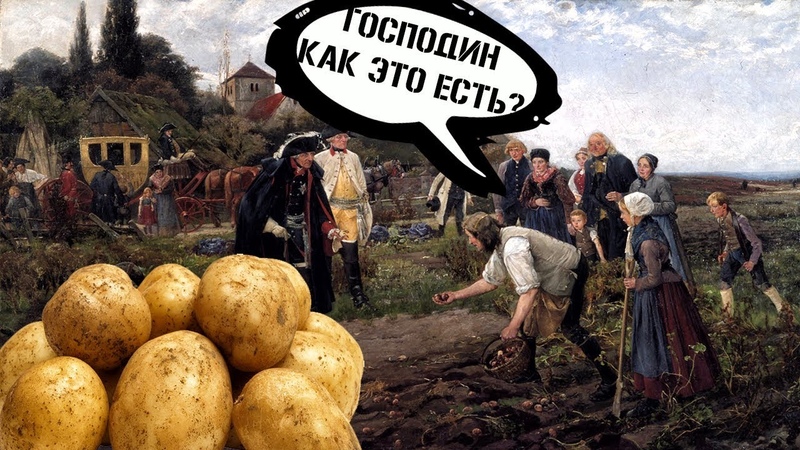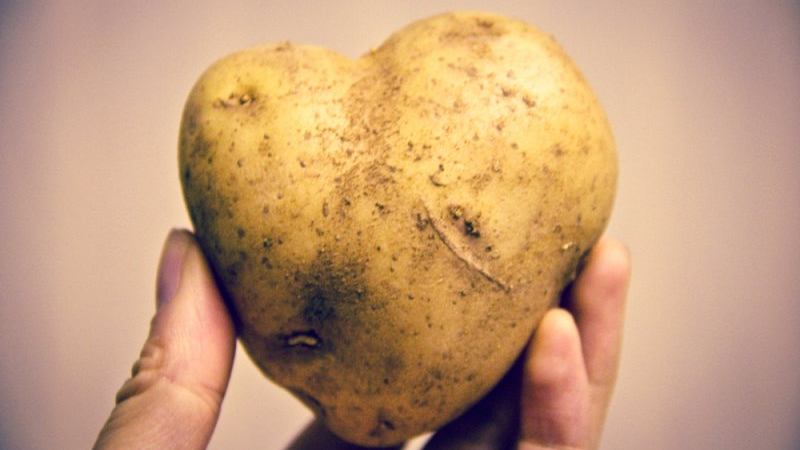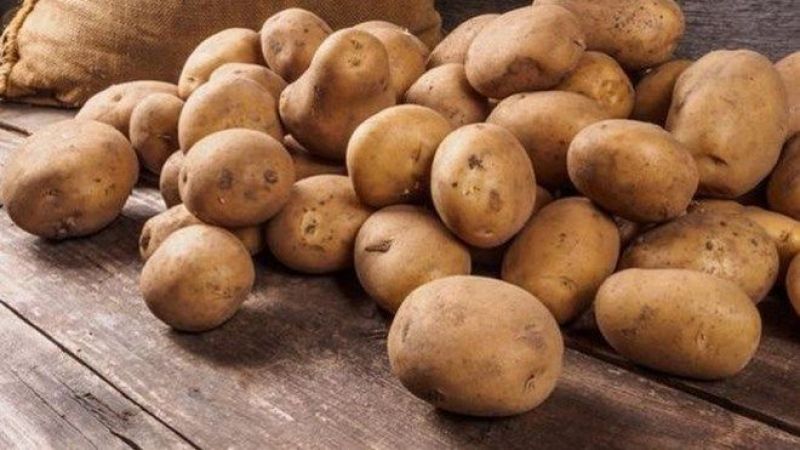The history of the origin and distribution of potatoes: where the potatoes come from and how they gained their popularity
The history of the appearance of potatoes in Europe and Russia is shrouded in legends and resembles an adventure novel. Culture did not immediately conquer the love of people due to the fear of everything new and exotic. In Germany, there were rumors about the toxicity of tubers, so the potatoes were called "craft teuffel" - "devil's power". In tsarist Russia, peasants staged potato riots, which spoke of extreme hostility to culture.
Where the potatoes come from and what path they had to overcome in order to get the love of the inhabitants of many countries of the world - we will tell in the article.
The content of the article
Homeland of potatoes
The South American Andes are home to the modern potato. Unpromising in terms of agriculture, the mountains became the first region on the planet where agriculture was born.
About 10 thousand years ago, the ancient Indian tribes mastered the technology of potato cultivation. The culture fell in love with local residents for its simplicity in care and the ability cultivation on poor and excessively moist soil.
Reference. The first wild tubers were discovered in the settlement of Ancon in northern Peru. This find is about 4.5 thousand years old. On the shores of Lake Titicaca, an ancient potato field was found during excavations, which was cultivated in the 4th century BC. e.
History of appearance and first mentions

The first written mentions of potatoes are recorded in Spanish documents. They describe in detail the conquest of the lands of South America (modern states - Colombia and Venezuela). The authors of the historical summary are Gonzalo Jimenez de Quesada, Juan de Castellanos, Pasqual de Andagoya, Fernandez de Oviedo. The report "A Brief Summary of the Conquest of the New Kingdom of Granada" talks about the inhabitants of these lands, their way of life, food preferences.
The main food of the Indians was maize, yucca and tubers, which resemble truffles and turnips at the same time, called "cubias". We are talking about a culture that is already familiar to us - potatoes.
In the manuscript of the anonymous Dictionary and Grammar of the Chibcha Language, dated to the early 17th century, there are different types of potatoes:
- animal truffle;
- truffle, root;
- yellow truffle;
- wide truffle;
- long truffle.
Another Spanish conqueror, Pasqual de Andagoya, in his notes talked about tubers resembling large chestnuts or turnips.
The historian Pedro Cieza de Leon in the Chronicles of Peru (1553) gave a detailed description of the potato, thanks to which the Europeans learned about the origin of the culture. In his work, the author mentions that he saw tubers in Ecuador and Colombia. Taking the information of the conquistadors and his observations as a basis, the historian described the method of storing and preparing tubers.
Before the arrival of the European conquistadors in the 16th century, potatoes were actively cultivated and eaten by the Andean peoples. A dish called chunyo was prepared from the tubers. At first, potatoes were frozen at night in the mountains, and thawed during the day. The procedure was repeated several times and periodically kneaded by hands. The freezing-defrosting process allowed to remove moisture from the tubers and obtain a completely dehydrated product. Dry potatoes were stored for a long time without losing nutritional qualities. Before using the balls, they made flour and baked cakes, cooked soup, added to meat and vegetables.
Research in 2007 revealed that the first potato planting outside of South America began in the Canary Islands in the 1560s. Ships cruising between the New and the Old World did anchorage there.The tubers came here from several places, and not from one, as was commonly thought. From the islands, the overseas product came to Spain, and from there it spread to other countries.
Potatoes in Europe
Scientists have not yet come to a consensus on the appearance of potatoes in Europe. The championship was given to the British Vice-Admiral Francis Drake for a long time.... The legend of the famous pirate and potato quickly acquired new details. It was rumored that the admiral brought potatoes to his friend Gerard, and he treated the English parliamentarians with tops and tubers fried in oil. It was later revealed that Drake's ships never docked on the shores of South America.
The second popular version says that Sir Walter Romef brought the potatoes to England. But it was also debunked by historians, since it is known for certain that at that time in Virginia they did not know about culture.
According to the third version, for the appearance of potatoes in Europe, one should thank the monk Neronim Cordan, who lowered the first basket of tubers to the Spanish coast in 1580.
More plausible is the theory that it was Ciez de Leon who brought potatoes from Peru in 1551. The first mention of the use of the product in food also refers to Spain. In 1573, the tubers were on the list of a grocery basket prepared for the Hospital of the Blood of Jesus in Seville. Further, the culture spread to other European countries: Belgium, Italy, the Netherlands, Germany, France, Great Britain.

How potatoes were brought to Russia
At the end of the 17th century, Peter I brought potatoes from Holland and gave the order to send them to the provinces. However, the culture did not spread. The peasants were wary of the overseas vegetable and refused to cultivate it in the fields.
In the "Historical note on the introduction of potato culture in Russia" it is said that the foreign innovation was to the liking of certain representatives of the aristocracy, mainly foreigners. During the reign of Empress Anna, potato dishes began to appear on the tables, which were appreciated as tasty, but not tasty.
First culinary recipes
The authorship of the first cookbook with recipes for cooking potatoes belongs to the chef of the princes-bishops of Liege - Lancelot de Casteau. A book called Ouverture de cuisine was published in 1604 and contained four recipes for cooking exotic tubers for Europeans:
- In the first recipe, the chef recommends boiling the tubers, cutting into pieces and seasoning with butter and black pepper.
- In the second version, the potatoes must be cut into chunks and stewed in red wine with butter and a pinch of nutmeg.
- The third recipe involves stewing the tubers with butter, fresh marjoram, parsley, and whipped egg yolks with wine.
- In the fourth variant, the potatoes were baked in ash, peeled off and cut into pieces. Sprinkled with mint, raisins, pepper and vinegar.
There is no salt in the recipes due to its presence in butter.
Read also:
Features of storing potatoes in a garage without a cellar.
What is potato late blight: a description of the disease and methods of treatment.
Popularization of culture

European potatoes come from Canarian and Spanish. From the Iberian Peninsula, he came to Italy and the Netherlands and became a frequent dish on the tables of different segments of the population. In other European countries, botanists were engaged in crop cultivation.
The popularization of potatoes in Europe was difficult. It was slowed down by the spread varieties bitterly. The tubers and tops contained a large amount of solanine, which made them unsuitable even for feeding livestock. Storing tubers required certain skills; most of the crop turned green or rotted. In this regard, unpleasant rumors circulated about the potato. People were afraid to eat tubers, believing that this leads to the development of diseases.
Ireland is one of the few European countries where potatoes are the norm alongside oatmeal. In the 18th century, the product saved the Irish from hunger, but in the 19th century it led to national disaster. The reason was the infection of the culture with late blight, brought from Mexico. In 1845, there was a big potato crop failure, which was repeated in 1846. The scale of the famine is staggering: according to the 1851 census, in 10 years the country's population fell by 1.5 million.
In Lithuania and Belarus, the culture began to grow in the middle of the 18th century, but until the 20th century it did not play an important role in nutrition. The potato revolution in Belarus happened during the First World War. Then tubers began to be eaten due to grain deficiency. Today the country ranks 9th in the world in potato cultivation.
Culture appeared on the territory of France during the reign of Louis XVI. The locals gave the tubers an interesting name - "pom de terr", which means "earthy apple". At first, the product was not accepted and they refused to grow and prepare dishes from it, considering it coarse food. Until the end of the 18th century, potato flowers were used as decoration, they were worn in the form of hair ornaments and vignettes.
In 1755, during a period of fierce famine, the Paris Academy announced a competition for new food products. Apothecary Antoine Auguste Parmentier wrote a work on the chemical composition of culture, for which he received a reward.
Despite the fact that by the end of the 18th century it became known about the beneficial properties of potatoes, the peasants refused to grow it... The European monarchs did their best to dissuade the people by resorting to the "carrot and stick" method. For example, in England, peasants were promised a reward in the form of gold medals. The dubious method was used by the Prussian king Friedrich Wilhelm I. He issued a cruel decree - chopping off the ears and noses of those who refused to grow potatoes.
The Dutch and Flemings were the first to discover the economic benefits of growing crops. The cultivation of grain crops caused difficulties, so they decided to abandon them and take up animal husbandry, which required a considerable amount of feed. At first, the Dutch fed pigs and cows with turnips, then switched to potatoes. The culture grew without problems on scarce soils and was more nutritious.
Catherine I took up the popularization of culture in Russia. In 1765, 57 barrels of tubers were delivered from Germany for the purpose of humanitarian aid to the starving Finnish peasants. At the same time, by order of the mistress, tubers were sent throughout the empire with instructions for breeding. Local governors were in charge of the process. Nevertheless, the good idea was not crowned with success - people stubbornly did not allow overseas product on their tables, continuing to grow the familiar turnip. This continued until the middle of the 19th century.
During the reign of Nicholas I in 1839, there was a famine in the country due to crop failure. The ruler gave the order to plant potatoes in all provinces at the rate of 105 liters (4 measures) per person. In the Moscow province, they had to work for free; in Krasnoyarsk, everyone who refused was sent to hard labor. Throughout the country, "potato riots" broke out, but they were brutally suppressed. Despite the tsar's harsh policy, culture became the "second bread".
Reference. The three world leaders in potato growing include China (88.99 million tons per year), India (45.34 million tons per year) and Russia (30.20 million tons per year).
E. A. Grachev was engaged in potato breeding in the 19th century. Thanks to his efforts, the American variety was born (the second name is Early Rose) and about 80 more varieties. At the beginning of the twentieth century, the famous biologist A.G. Lorkh bred the high-yielding variety Lorkh.
Conclusion
Having passed a long path of hostility and condemnation, potatoes have deservedly become one of the main food products.Thanks to the conquistadors, from the harsh climate of the Andean mountains, potatoes came to the more favorable conditions of the Canary Islands, and from there they "moved" to Europe and Russia.
High nutritional value, rich vitamin and mineral composition, the ability to grow in unfavorable conditions - all this made potatoes the “second bread”. The popularization of culture was facilitated by German, French and Russian monarchs. Their methods are perplexing, however, they have been effective.